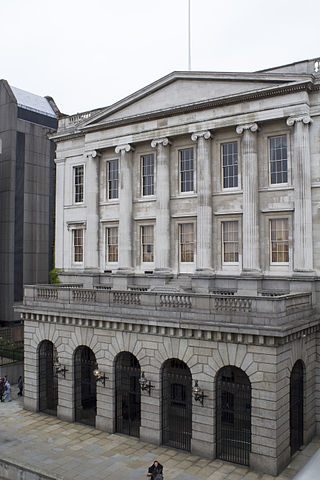
A livery company is a type of guild or professional association that originated in medieval times in London, England. Livery companies comprise London's ancient and modern trade associations and guilds, almost all of which are styled the "Worshipful Company of" their craft, trade or profession. There are 111 livery companies in total. They play a significant part in the life of the City of London, not least by providing charitable-giving and networking opportunities. Liverymen retain voting rights for the senior civic offices, such as the Lord Mayor, Sheriffs and Common Council of the City Corporation, London's ancient municipal authority with extensive local government powers.

The Worshipful Company of Grocers is one of the 111 livery companies of the City of London, ranking second in order of precedence.
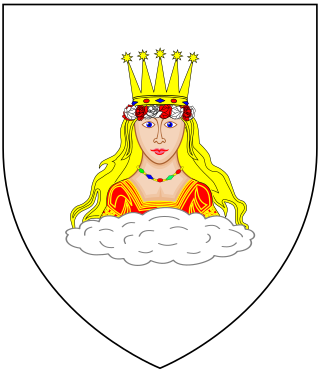
The Mercers' Company, or the Worshipful Company of Mercers, is a livery company of the City of London in the Great Twelve City Livery Companies, and ranks first in the order of precedence of the Companies.

The Worshipful Company of Clothworkers was incorporated by Royal Charter in 1528, formed by the amalgamation of its two predecessor companies, the Fullers and the Shearmen. It succeeded to the position of the Shearmen's Company and thus ranks twelfth in the order of precedence of Livery Companies of the City of London.

The Worshipful Company of Cutlers is one of the ancient Livery Companies of the City of London. It ranks 18th in the order of precedence of the Companies.

The Worshipful Company of Armourers and Brasiers is one of the livery companies of the City of London. The Armourers' Guild was established in 1322; it received a royal charter in 1453. Other companies, including the Armour Repairers, merged with the Armourers. In 1708, brass workers joined the company, which was renamed as the Armourers' and Brasiers' Company. The company does support the metallurgy industry, but does not retain a close association with its original trade, as is the case with a majority of livery companies. It exists primarily as a charitable establishment.

The Worshipful Company of Cordwainers is one of the Livery Companies of the City of London. Cordwainers were workers in fine leather; the Company gets its name from "cordwain" (cordovan), the white leather produced from goatskin in Cordova, Spain. All fine leather makers, including Girdlers and Glovers, were originally classified as cordwainers; however, the term eventually came to refer only to fine leather footwear, including boots.

The Worshipful Company of Masons is one of the ancient Livery Companies of the City of London, number 30 in the order of precedence of the 111 companies. It was granted Arms in 1472, during the reign of King Edward IV; its motto is “God Is Our Guide”.
The Worshipful Company of Broderers is one of the livery companies of the City of London. Broderers were workers in embroidery; the organization of Broderers existed in at least 1376, and was officially incorporated by a royal charter in 1561. As the craft of embroidery has lost its importance as a trade, the company has become less of a trade association for broderers. Instead, the company is now, as are most livery companies, a charitable foundation.
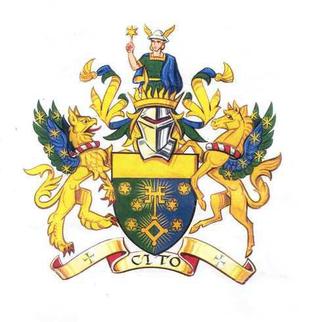
The Worshipful Company of Information Technologists, also known as the Information Technologists' Company, is one of the livery companies of the City of London. The company was granted livery status by the Court of Aldermen on 7 January 1992, becoming the 100th livery company. It received its Royal Charter on 17 June 2010 from Prince Edward.

Goldsmiths' Hall is a Grade I listed building at the junction of Foster Lane and Gresham Street in the City of London. It has served as an assay office and the headquarters of London's goldsmith guild, the Worshipful Company of Goldsmiths, one of the livery companies of the City of London. The company has been based at this location since 1339, the present building being their third hall on the site.
The Hospital of St Thomas of Acre was the medieval London headquarters of the Knights of Saint Thomas, founded as a church in 1227 in the parish of St Mary Colechurch, birthplace of the order's patron saint, Saint Thomas Becket. From the 14th century, it was the main headquarters of the military order.
The Mercers' School was an independent school in the City of London, England, with a history going back at least to 1542, and perhaps much further. It was operated by the Worshipful Company of Mercers and was closed in 1959.
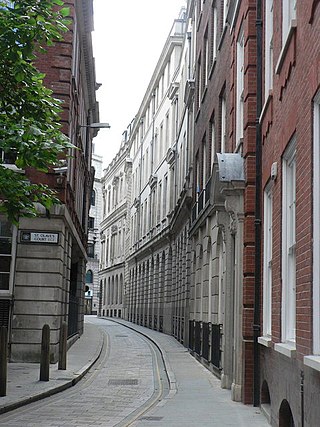
Ironmonger Lane is a narrow one-way street in the City of London running southbound between Gresham Street and Cheapside.

John Wilkes was an English printer, bookseller and stationer.

Foster Lane is a short street within Cheap ward, in the City of London, England. It is situated northeast of St Paul's Cathedral and runs southbound Gresham Street to Cheapside.

St Mary Colechurch was a parish church in the City of London destroyed in the Great Fire of London in 1666 and not rebuilt.

Cordwainers' Hall was the livery hall of the Worshipful Company of Cordwainers, the City of London livery company for Cordwainers from 1316 until its destruction in 1941.

Fore Street is a street in the City of London, England, near the Barbican Centre. It runs from Wood Street to Fore Street Avenue and is joined by Moor Lane on its north side. The street was extensively damaged by Nazi bombing during World War II and, following later development, nothing now remains of its original buildings other than St Giles-without-Cripplegate, which is a short distance away from the modern street.
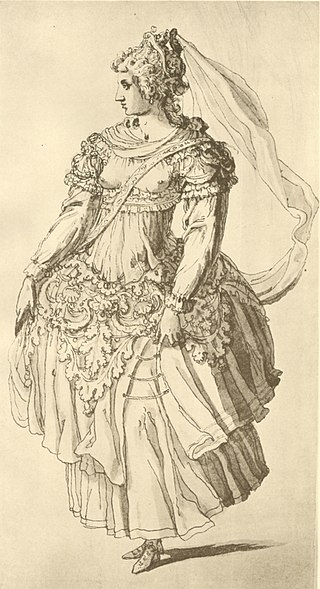
Christopher Shawe or Shaw was an English embroiderer and textile artist who worked on masque costume for Anne of Denmark. He was a member of the Worshipful Company of Broderers.

















